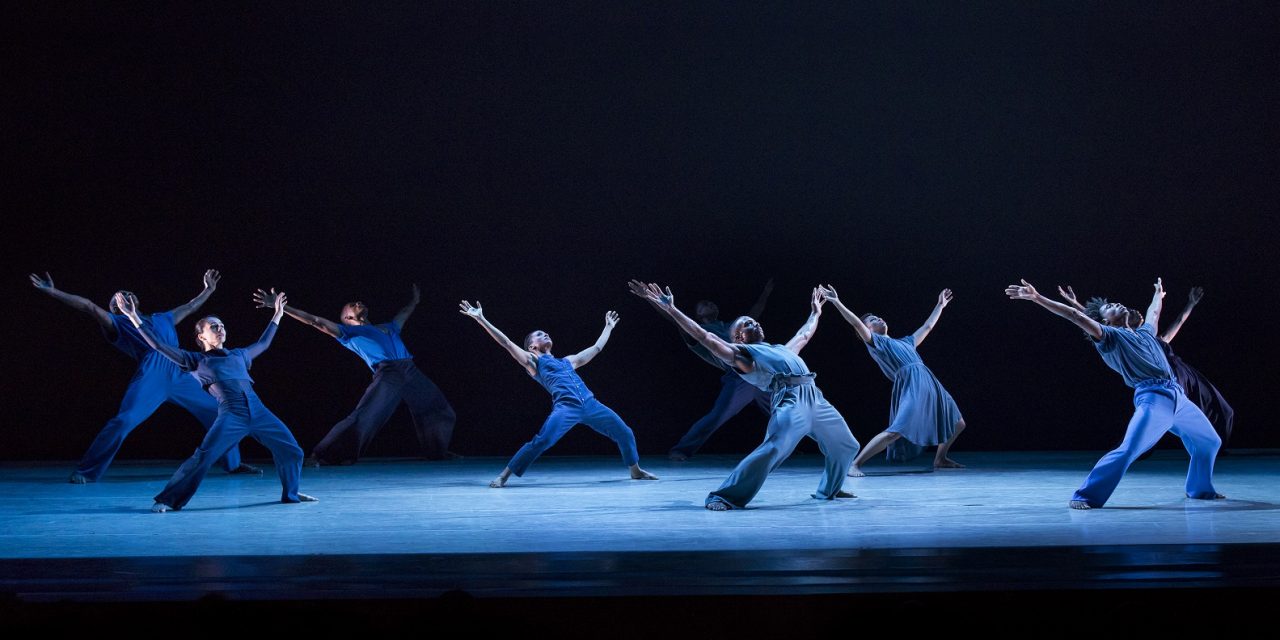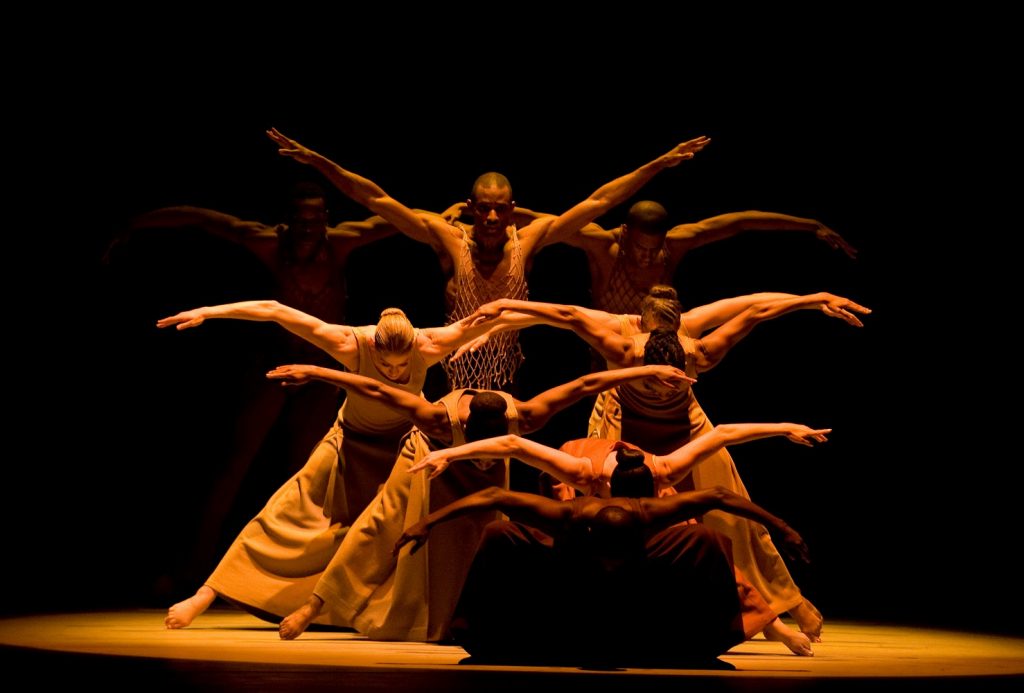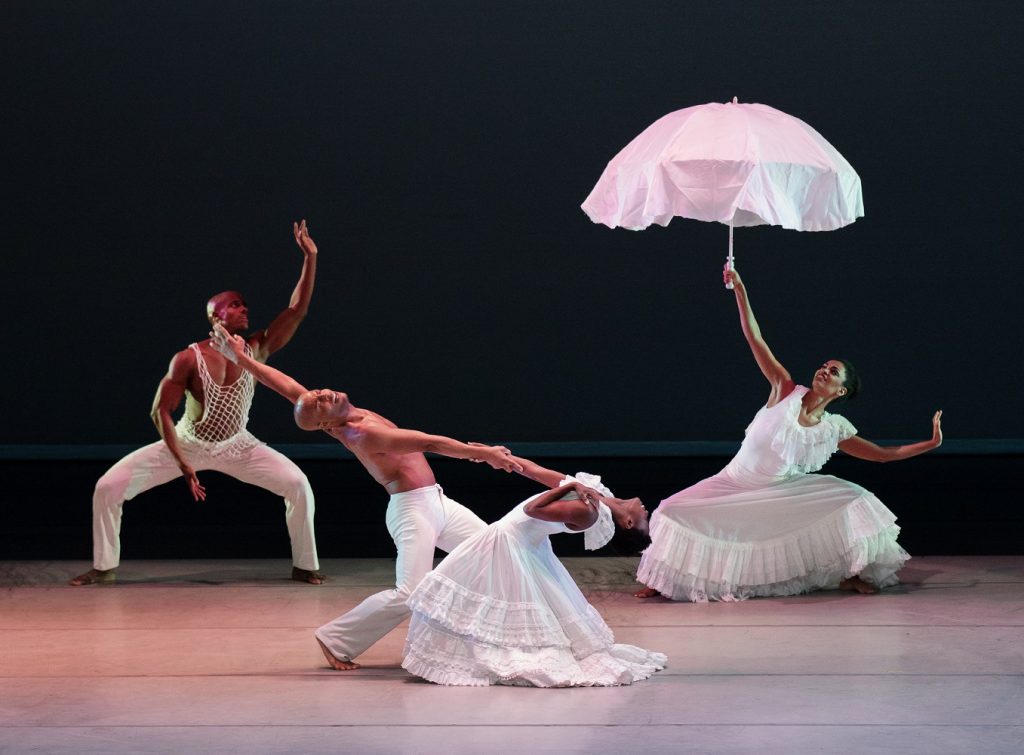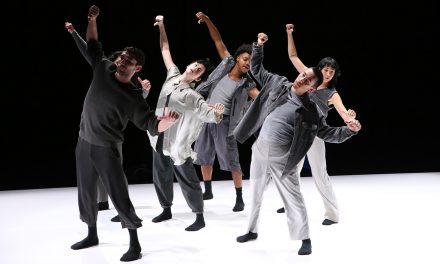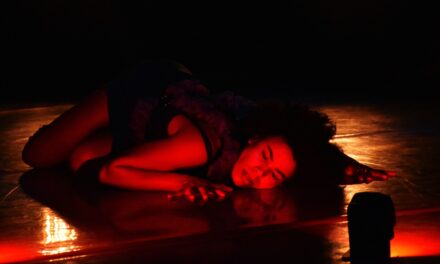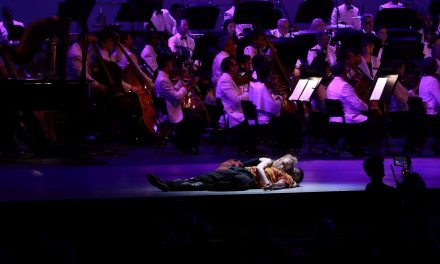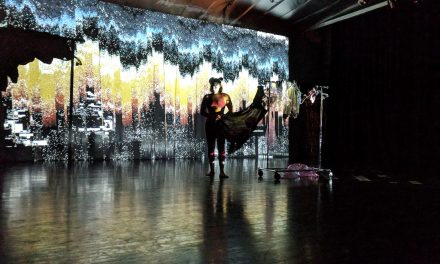The Orange County Performing Arts Center opened with a concert in its Segerstrom Hall in 1986. The new Renée and Henry Segerstrom Concert Hall named after the Center’s founding chairman and his late wife, opened in 2006 and the adjacent 500-seat theater was designated Samueli Theater in recognition of a large donation from the Henry Samueli Family Foundation. Appearing this past week at what is now known as the Segerstrom Center for the Arts was the ever-durable Alvin Ailey American Dance Theater, now in its 60th year. It was announced that the Thursday night performance was dedicated to the late modern dance icon Donald McKayle who had choreographed works for the Ailey company. McKayle was a longtime resident of southern California. He died on April 6, 2018 at the age of 87.
Alvin Ailey was born in Texas and his family moved to Los Angeles when he was 12 years old. He was 18 when he began studying modern dance with Lester Horton and became a member of the Lester Horton Dance Group one year later. Ailey moved to New York around 1954 and began performing on Broadway with such luminaries as Lena Horne and Ricardo Montalban. He studied modern dance with Martha Graham and acting with Stella Adler, but his greatest recognition followed the formation of his own company, the Alvin Ailey American Dance Theater in 1958.
Alvin Ailey died in 1989 at the young age of 58 of an AIDS related illness. After his death, one of Ailey’s leading dancers, Judith Jamison became the company’s Artistic Director, remaining in that position until 2011 when she personally chose Robert Battle, a frequent choreographer and artist-in-residence at Ailey since 1999, as her predecessor. Ms. Jamison continued working with the company and in 2015 celebrated her 50th Anniversary with the Alvin Ailey American Dance Company.
Jamar Roberts has performed with the Ailey’s second company, Ailey II and Complexions Contemporary Ballet. In Roberts’ own words, “As a response to the current social landscape in America, Members Don’t Get Weary takes an abstract look into the notion of one ‘having the blues.’” The dance was more than just a visualization of John Coltrane’s powerful music. It was a gem of a work that took pure movement and gently coated it with the struggles, hopes, disappointments and faith of African Americans. Roberts first hinted at these qualities in the opening section with a group of five performers wearing wide-brimmed sun hats reaching forward, bending over and then reaching out again. They moved into a strong unison section that splintered off into what resembled folk working in a field. One man became ill and the rest paused to pay homage.
The extraordinary Lighting and Scenic design by Brandon Stirling Baker, with its blues, grays and shadows, allowed the characters of this dance to appear and disappear into the background, almost as if they were ghosts from the past. Roberts, however, put forth his work in an abstract form. There was no recognizable narrative, only hints of longing, faith, rage and escape from injustice. Even with the sun hats, there was no bright sun to hide from. Only shelter from persecution.
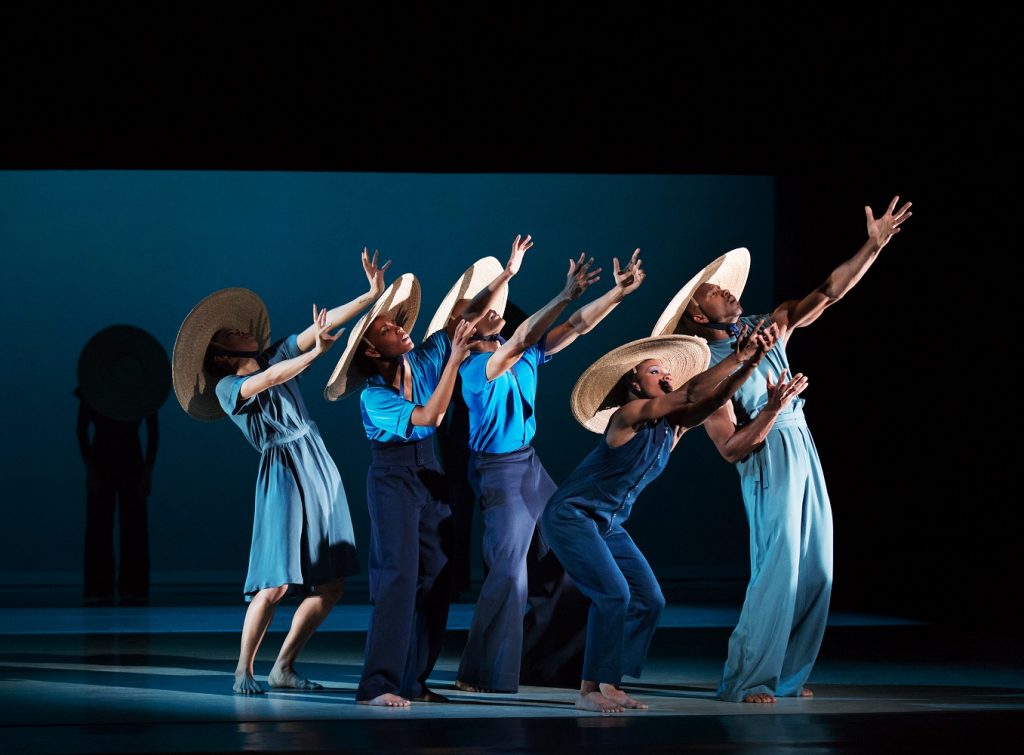
“Members Don’t Get Weary”, Choreography by Jamar Roberts – Alvin Ailey American Dance Theater – Photo by Paul Kolnik
Members Don’t Get Weary was filled with strong solos, duets and beautiful unison phrases that broke apart into ten very individualistic solos. The cast included ten beautifully trained dance artists: Jeroboam Bozeman, Ghrai Devore, Renaldo Maurice, Jacquelin Green, Michael Jackson, Jr., Samantha Figgins, Chalvar Monteiro, Jacquelin Harris, Danica Paulos, and Yannick Lebrun.
To dance aficionados, Twyla Tharp needs no introduction. She began performing with the Paul Taylor Dance Company, forming her own New York based company, Twyla Tharp Dance, in 1965. In addition to choreographing for her company, Tharp has created dances for numerous well-known companies that include The Joffrey Ballet, American Ballet Theatre, The Paris Opera Ballet, The Royal Ballet, New York City Ballet, and Hubbard Street Dance Chicago. She has worked in television, film and Broadway, and she is the author of several books, among them her 1992 autobiography Push Comes To Shove (Bantam Books).
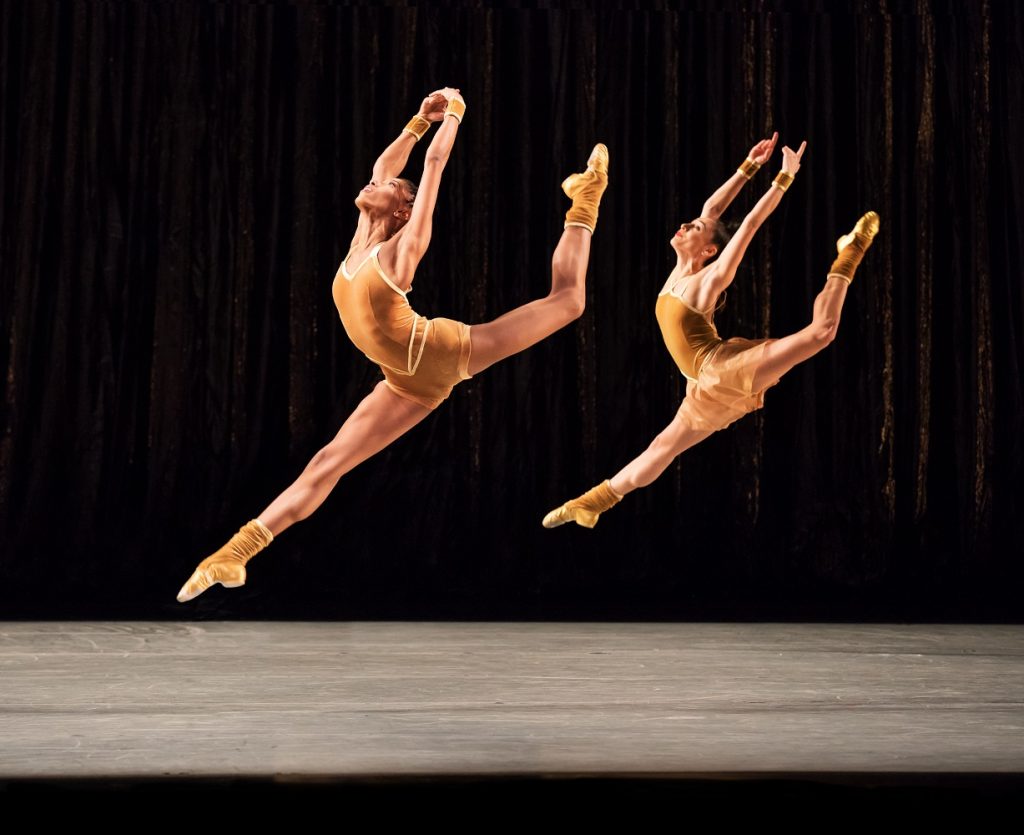
Jacqueline Green, Danica Paulos in Twyla Tharp’s “The Golden Section” – Alvin Ailey American Dance Theater – Photo by Paul Kolnik
Tharp’s 1983 work entitled The Golden Section was one dance trick followed by a series of endless partnering clichés. Women were tossed about like sacks of grain, flipped upside down and spun like tops. Tharp even used the stage wings a la Trisha Brown where were women thrown in and out. It was a showcase for Tharp’s circus imagination, but without substance. Entertaining, yes, but extremely limited. This fact was boosted by the disco style music by David Byrne, the gold curtain in the background and the semi-futuristic costumes by Santo Loquasto. Jennifer Tipton’s lighting, however, was gorgeous.
The Golden Section was an excellent vehicle for the dancers to display their technical abilities and to wow the audience, but it did not rise to the same level as the other works on this program.
In/Side was choreographed by Robert Battle, the Artistic Director of the Ailey company. Battle is the founder of Battleworks Dance Company, which has performed extensively at such prestigious venues as The Joyce Theater, Dance Theater Workshop, American Dance Festival, and Jacob’s Pillow Dance Festival. Mr. Battle has received several awards including being honored as one of the “Masters of African-American Choreography” by the Kennedy Center for the Performing Arts in 2005.
This work was a solo, performed to near perfection by Yannick Lebrun, that grabbed one’s attention and held it captive until long after the curtain fell. Set to the haunting Wild is The Wind sung by Nina Simone, there was a sense of an internal struggle that twisted at the man’s soul. Lebrun can spin like an ice skater, but it was his acting ability and the tension he created during the moments like the one on the floor, a leg extended upward while his body slowly spiraled, that truly made his performance so gripping. In/Side was a formidable and introspective work that quietly speaks to a moment in every human’s journey through life.
The program concluded, as Ailey concerts generally do, with Alvin Ailey’s signature work Revelations. I have seen this work multiple times and, despite myself, it always brings me to my feet. Ailey’s early work Blues Suite was inspired by his southern roots and for Revelations (1960), Ailey drew its stimulus from the African American music he heard during his youth. According to the company’s website, Revelations came from Ailey’s “‘blood memories’ of his childhood in rural Texas and the Baptist Church.”
The music consisted of old southern spirituals and African American songs that peppered throughout my own southern Baptist upbringing in Virginia. Songs like I Been ‘Buked, Fix Me Jesus, Wade in the Water, Sinner Man and the powerful spiritual Rocka My Soul in the Bosom of Abraham. They are songs that reflect the times of slavery, but that continue to resonate and strengthen one’s resolve.
Revelations has been reviewed many, many times, and it is indeed a classic. Is it dated? Perhaps, but it is also timeless and well taken care by Judith Jamison and Robert Battle. There was a beautiful and soulful duet performed by Linda Celeste Sims and Jamar Roberts. Clifton Brown was powerful in a solo to I Wanna Be Ready. Sinner Man was danced by three extremely talented men, Jeroboam Bozeman, Yannick Lebrun and Michael Francis McBride.
A favorite for all was the church ladies with their constant and expressive fanning as they welcomed each other, gossiped and recalled their week. The men entered for service and Revelations concluded with the show stopping Rocka My Soul in the Bosom of Abraham featuring the entire company. After a long, and well-deserved round of curtain calls, the company gave an encore performance of that final scene.
The Alvin Ailey American Dance Theater proved that it is proceeding stronger than ever. The company performs at the Segerstrom Center for the Arts in Segerstrom Hall through Sunday, April 22. I recommend that you go see them if you can.
For more information and tickets, click here.
Feature Photo: Alvin Ailey American Dance Theater in Members Don’t Get Weary by Jamar Roberts. Photo by Paul Kolnik

